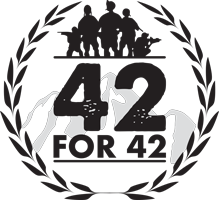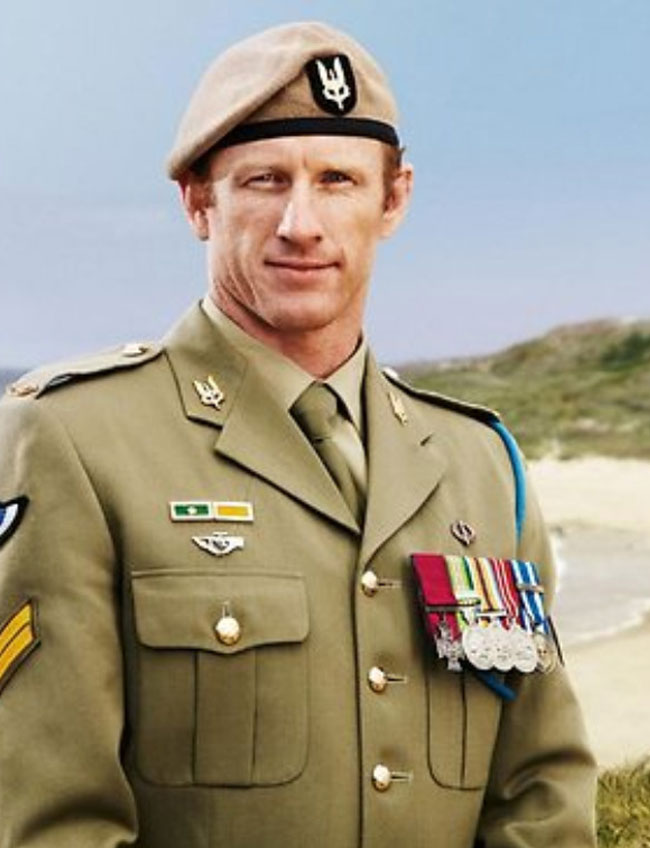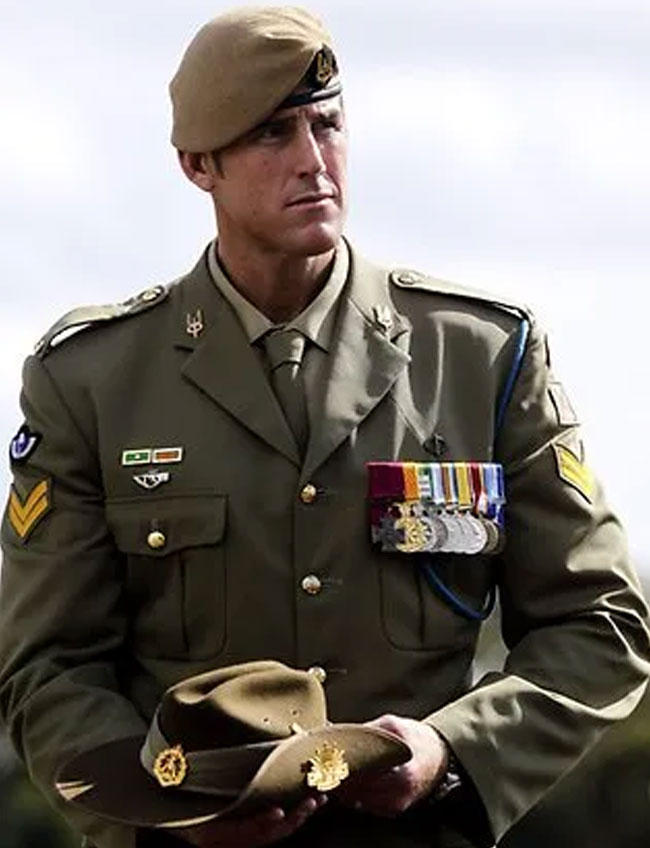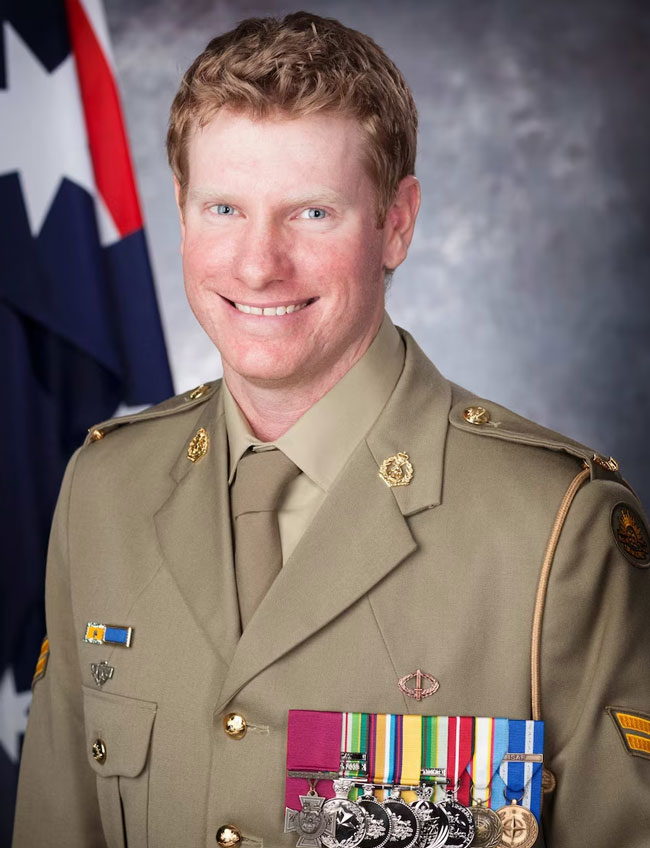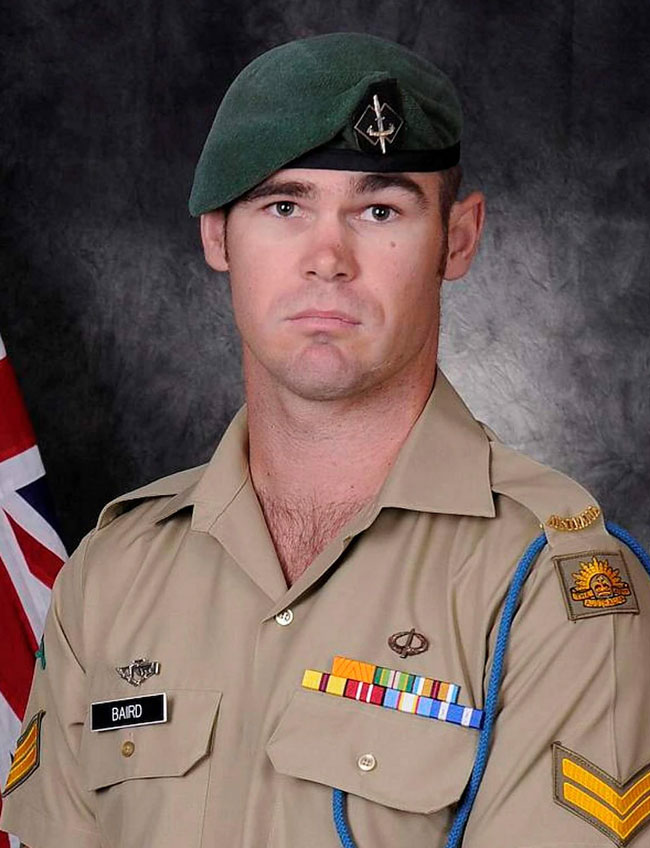VICTORIA CROSS MEDAL – VC
The Victoria Cross for Australia is the highest award in the Australian honours system. The Victoria Cross for Australia is the “decoration for according recognition to persons who in the presence of the enemy, perform acts of the most conspicuous gallantry, or daring or pre-eminent acts of valour or self-sacrifice or display extreme devotion to duty.”
The Victoria Cross was created by Queen Victoria in 1856 and made retrospective to 1854 to cover the period of the Crimean War. Australians were eligible for the Victoria Cross and other awards under the Imperial system of honours, until the Victoria Cross was instituted in the Australian honours system by Letters Patent on 15 January 1991.
The Victoria Cross is a Maltese Cross, cast in bronze from cannons captured during the Crimean War (1854-1856). There is sufficient metal for a number of new medals to be cast from these cannons. They are each handmade by Hancocks and Company (Jewellers) of London.
One hundred and one Australians have been awarded the Victoria Cross: 96 were awarded the Victoria Cross under the Imperial honours system (before the Australian Government chose to introduce its own honours system in 1975) and four Australian Army soldiers have been awarded the Victoria Cross for Australia, which was introduced as part of the Australian honours system by Letters Patent on 15 January 1991.
The Governor-General of Australia awards the Victoria Cross for Australia, with the approval of the Sovereign, on the recommendation of the Minister for Defence, subject to review by the Defence Honours and Awards Appeal Tribunal.
Australians have been awarded the Victoria Cross in the following conflicts:
6 in the Boer War 1899–1902
64 in World War I 1914–1918
2 in North Russia 1919
21 in World War II 1939–1945
4 in Vietnam 1962–1972
4 in Afghanistan 2001–2021
As of February 2021, five Victoria Cross for Australia have been awarded, two posthumously. The first was awarded on 16 January 2009 to Trooper Mark Donaldson, who had rescued an International Security Assistance Force interpreter under heavy fire in Oruzgan Province in Afghanistan. Trooper Mark Donaldson’s award came almost 40 years after Warrant Officer Keith Payne who was the last Australian to be awarded the (original) Victoria Cross for gallantry on 24 May 1969 during the Vietnam War. Unlike the original Victoria Cross where the announcement of the award may be followed sometime later by the presentation of the award, the announcement of all awards of the Australian VC have occurred on the same occasion as the presentation by the Governor-General in the presence of the Prime Minister.
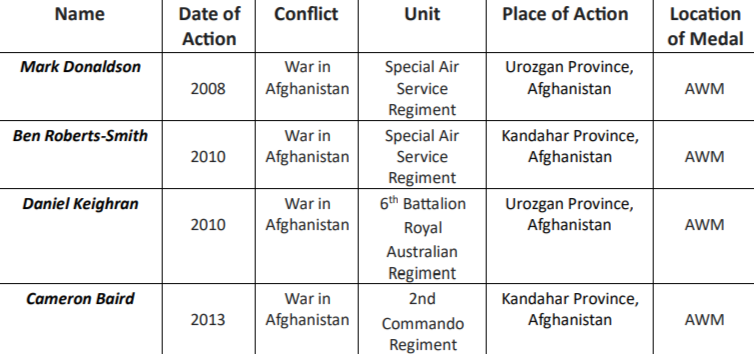
Mark Donaldson
Mark Gregor Strang Donaldson, VC (born 2 April 1979) is an Australian soldier and a recipient of the Victoria Cross for Australia, the highest award in the Australian honours system. Trooper Donaldson was a member of the Special Air Service Regiment (SASR) when he exposed himself to enemy fire to protect injured troops and then rescued an interpreter under heavy enemy fire in the Battle of Khaz Oruzgan during Operation Slipper, the Australian contribution to the War in Afghanistan. He was presented with the decoration by the Governor-General of Australia, Quentin Bryce, in a ceremony in Canberra on 16 January 2009. On 25 January 2010, Donaldson was named the 2010 Young Australian of the Year. He was promoted to corporal in June 2010.
The actions for which Donaldson’s Victoria Cross for Australia were awarded took place on 2 September 2008. Patrolling with Afghan and US forces, they were ambushed by a well-prepared and larger Taliban force. The ambush began with sustained machine gun and rocket-propelled grenade fire, causing several casualties. Donaldson deliberately exposed himself to fire from the Taliban fighters in order to draw their attention away from the casualties, allowing them to be moved to cover. When the patrol attempted to withdraw, the number of casualties was such that the unwounded personnel (including Donaldson) had to make their way on foot, beside their vehicles, as the casualties filled the vehicles. As they set off, it was realised that an Afghan interpreter attached to the patrol was wounded, and had not been loaded into the vehicles. Donaldson immediately crossed the 80 metres (87 yd) or so of open ground between the convoy and the interpreter, under heavy fire, and then carried him back to the vehicles where Donaldson administered first aid. The patrol eventually broke free of the ambush after two hours.
When asked about the incident, Donaldson commented: “I’m a soldier, I’m trained to fight … it’s instinct and it’s natural. I just saw him there, I went over and got him, that was it.” The events were first reported by the Australian press on 12 December 2008 following a briefing by Major General Tim McOwan on 11 December. At this stage Donaldson was identified only as “Trooper F”. Donaldson then became the first recipient of the Victoria Cross for Australia on 16 January 2009; he was presented with the medal by the Governor-General at a ceremony in Government House, Canberra.
The official citation was published in a special edition of the Commonwealth of Australia Gazette of 20 January 2009 and states (in part) that the award was made for ” … most conspicuous acts of gallantry in action in a circumstance of great peril in Afghanistan, as part of the Special Operations Task Group during Operations SLIPPER, Oruzgan province, Afghanistan.” Seven days after the medal presentation, Donaldson lent his VC and other medals to the Australian War Memorial in an official ceremony. The medals were placed on display at the end of February 2009. Donaldson was subsequently received in audience by the Queen, Elizabeth II, at Windsor Castle on 10 November 2009.
- Born – 2nd April 1979
- Service/Branch – Australian
- Unit – 1st Battalion, Royal Australian Regiment, Special Air Service Regiment
- Deployments – East Timor, Iraq – Operation Falconer, Afghanistan – Operation Slipper
Ben Roberts-Smith
Benjamin Roberts-Smith VC, MG (born 1 November 1978) is an Australian former soldier. Roberts-Smith is Australia’s most decorated living soldier. He was awarded a Medal for Gallantry in 2006, the Victoria Cross in 2011, and a Commendation for Distinguished Service in 2012.
Roberts-Smith joined the Australian Army in 1996 at age eighteen. After completing basic training at Blamey Barracks in Kapooka, New South Wales, he underwent initial employment training at the School of Infantry at Lone Pine Barracks in Singleton, New South Wales. From there, Roberts-Smith was posted to the 3rd Battalion, Royal Australian Regiment (3 RAR) in Holsworthy, New South Wales.
Initially part of a rifle company, he subsequently became a section leader in the Direct Fire Support Weapons Platoon. With 3 RAR, Roberts-Smith was deployed to East Timor twice, the first time as part of the International Force East Timor in 1999.
After completing the Special Air Service Regiment (SASR) selection course in 2003, and the SASR reinforcement cycle, Roberts-Smith was initially posted to 3 Squadron at Campbell Barracks (Western Australia). He took part in operations off Fiji in 2004, and was part of personal security detachments in Iraq throughout 2005 and 2006. Roberts-Smith was deployed to Afghanistan on six occasions; the first two were in 2006 and 2007. After completing junior leadership training in 2009, he was posted to 2 Squadron as a patrol second-in-command (2IC), and later as a patrol commander. Roberts-Smith was a member of training and assistance teams throughout Southeast Asia. He returned to Afghanistan in 2009, 2010 and 2012. He left the full-time army in 2013 at age thirty-five with the rank of corporal, and served part-time with the Army Reserve until 2015.
In 2006, Roberts-Smith was awarded the Medal for Gallantry for his operations as a patrol scout and sniper in Afghanistan.
He was presented with the VC by the Governor-General of Australia, Quentin Bryce, at a ceremony held at Campbell Barracks in Perth on 23 January 2011.
On 26 January 2014, Roberts-Smith was awarded the Commendation for Distinguished Service as part of the 2014 Australia Day Honours. The award arose from a 2012 tour of Afghanistan, in which Roberts-Smith “distinguished himself as an outstanding junior leader on more than 50 high risk” operations.
- Born – 1st November 1978
- Service/Branch – Australian, Australian Army Reserve
- Unit – 3rd Battalion, Royal Australian Regiment Special Air Service Regiment
- Deployments – East Timor, Iraq – Operation Falconer, Afghanistan – Operation Slipper
Daniel Keighran
Daniel Alan Keighran, VC (born 18 June 1983) is an Australian soldier and a recipient of the Victoria Cross for Australia, the highest award in the Australian honours system.
Keighran was awarded the Victoria Cross for Australia for his actions in the Battle of Derapet on 24 August 2010, during the War in Afghanistan. He was presented with the medal by the Governor-General of Australia, Quentin Bryce, at a ceremony in Canberra on 1 November 2012.
Keighran is the third soldier to be awarded the Victoria Cross for Australia, and the first member of the Royal Australian Regiment so awarded.
Daniel Keighran joined the Australian Army in 2000. Prior to Afghanistan, he had served in East Timor and Iraq. He was promoted to lance corporal in 2005 while within Mortar Platoon of the Support Company, 6th Battalion, Royal Australian Regiment (6 RAR). In 2006 he deployed to Iraq as a Bushmaster Protected Mobility Vehicle driver, and in 2007 to Afghanistan with the Special Operations Task Group in the same role. He was promoted to corporal in 2009, and was posted to D Company, 6 RAR.
Daniel Keighran was awarded the Victoria Cross for his actions while serving with the 6th Battalion, Royal Australian Regiment, in a fire fight with insurgents during the Battle of Derapet on 24 August 2010, an action of Operation Slipper.
During the battle, Keighran “with complete disregard for his own safety” repeatedly exposed himself to enemy fire to draw fire away from a team treating a battle casualty (Keighran’s friend Lance Corporal Jared MacKinney). Keighran’s actions were key in allowing the Coalition forces to withdraw without further casualties.
Keighran’s Victoria Cross for Australia and accompanying medal group are on loan to the Australian War Memorial for display in the Hall of Valour.
- Born – 18th June 1983
- Service/Branch – Australian Australian Army Reserve
- Unit – 6th Battalion, Royal Australian Regiment, 11th/28th Battalion, Royal West Australian Regiment Army Headquarters
- Deployments – East Timor, Iraq, Afghanistan – Operation Slipper
Cameron Baird
Cameron Stewart Baird, VC, MG (7 June 1981 – 22 June 2013) was a soldier in the Australian Army who was posthumously awarded the Victoria Cross for Australia, the highest award in the Australian honours system. Cameron Baird was the fourth person to receive the Victoria Cross for Australia during Operation Slipper.
Cameron Baird joined the Australian Army in January 2000 and upon completion of his initial employment training was posted to the then 4th Battalion (Commando), Royal Australian Regiment, now the 2nd Commando Regiment, in February 2000. After being discharged in 2004, Baird re-enlisted in 2006 and in both periods of service, he was assigned to the 4th Battalion, Royal Australian Regiment (Commando).
In February 2014, Cameron Baird was awarded the Victoria Cross for Australia. For the most conspicuous acts of valour, extreme devotion to duty and ultimate self-sacrifice at Ghawchak village, Oruzgan Province, Afghanistan, as a Commando Team Commander in Special Operations Task Group on Operation SLIPPER.
On 22 June 2013, a commando platoon of the Special Operations Task Group, with partners from the Afghan National Security Forces, conducted a helicopter assault into Ghawchak village, Oruzgan Province, in order to attack an insurgent network deep within enemy-held territory. Shortly after insertion, Corporal Baird’s team was engaged by small arms fire from several enemy positions. Corporal Baird quickly seized the initiative, leading his team to neutralise the positions, killing six enemy combatants and enabling the assault to continue.
Soon afterwards, an adjacent Special Operations Task Group team came under heavy enemy fire, resulting in its commander being seriously wounded. Without hesitation, Corporal Baird led his team to provide support. En route, he and his team were engaged by rifle and machine gun fire from prepared enemy positions. With complete disregard for his own safety, Corporal Baird charged towards the enemy positions, supported by his team. On nearing the positions, he and his team were engaged by additional enemy on their flank.
Instinctively, Corporal Baird neutralised the new threat with grenades and rifle fire, enabling his team to close with the prepared position. With the prepared position now isolated, Corporal Baird manoeuvred and was engaged by enemy machine gun fire, the bullets striking the ground around him. Displaying great valour, he drew the fire, moved to cover, and suppressed the enemy machine gun position. This action enabled his team to close on the entrance to the prepared position, thus regaining the initiative.
On three separate occasions Corporal Baird charged an enemy-held building within the prepared compound. On the first occasion he charged the door to the building, followed by another team member. Despite being totally exposed and immediately engaged by enemy fire, Corporal Baird pushed forward while firing into the building. Now in the closest proximity to the enemy, he was forced to withdraw when his rifle ceased to function. On rectifying his rifle stoppage, and reallocating remaining ammunition within his team, Corporal Baird again advanced towards the door of the building, once more under heavy fire. He engaged the enemy through the door but was unable to suppress the position and took cover to reload. For a third time, Corporal Baird selflessly drew enemy fire away from his team and assaulted the doorway. Enemy fire was seen to strike the ground and compound walls around Corporal Baird, before visibility was obscured by dust and smoke. In this third attempt, the enemy was neutralised and the advantage was regained, but Corporal Baird was killed in the effort.
Corporal Baird’s acts of valour and self-sacrifice regained the initiative and preserved the lives of his team members. His actions were of the highest order and in keeping with the finest traditions of the Australian Army and the Australian Defence Force.
- Born – 7th June 1981
- Died – 22nd June 2013
- Service/Branch – Australian Army
- Unit – 4th Battalion, Royal Australian Regiment 2nd Commando Regiment
- Deployments – East Timor – Operation Tanager, Iraq – Operation Bastille, Operation Falconer, Afghanistan – Operation Slipper
